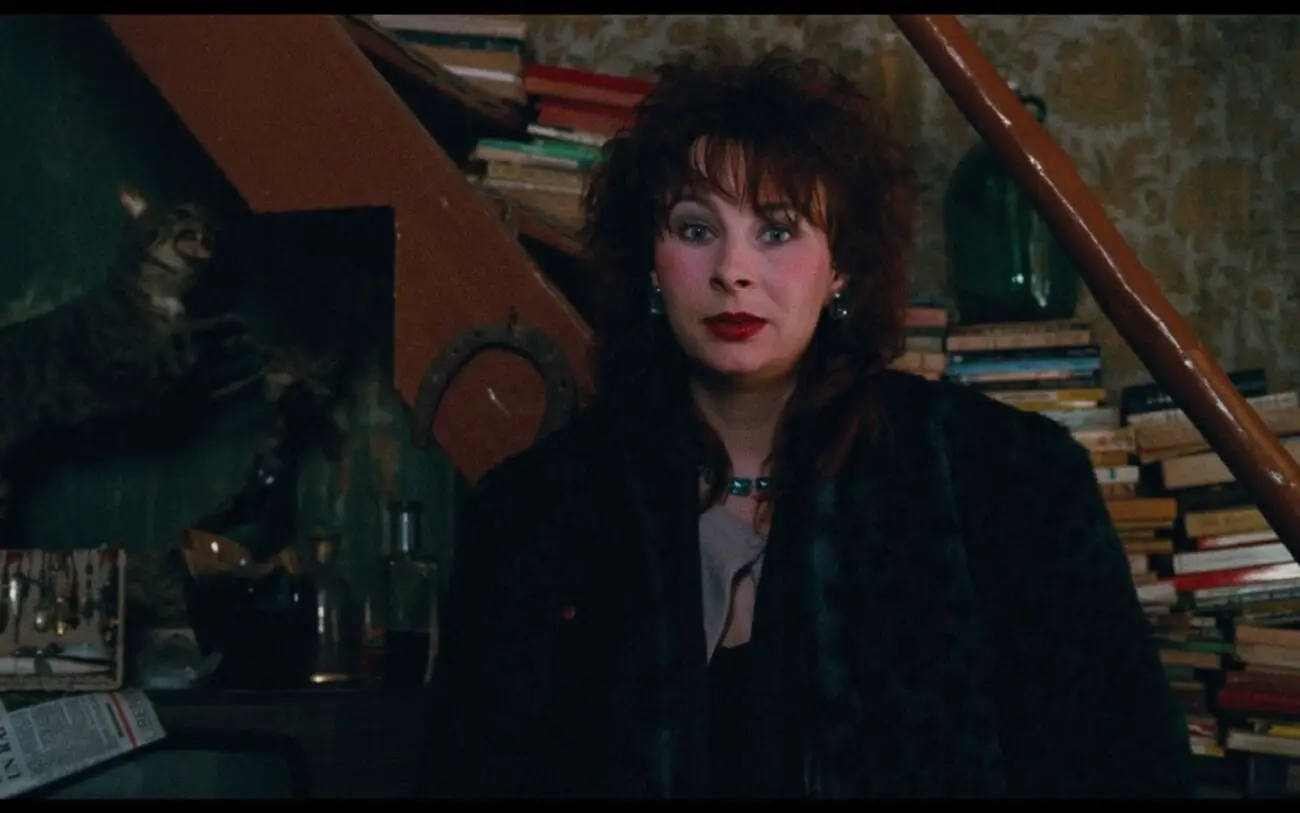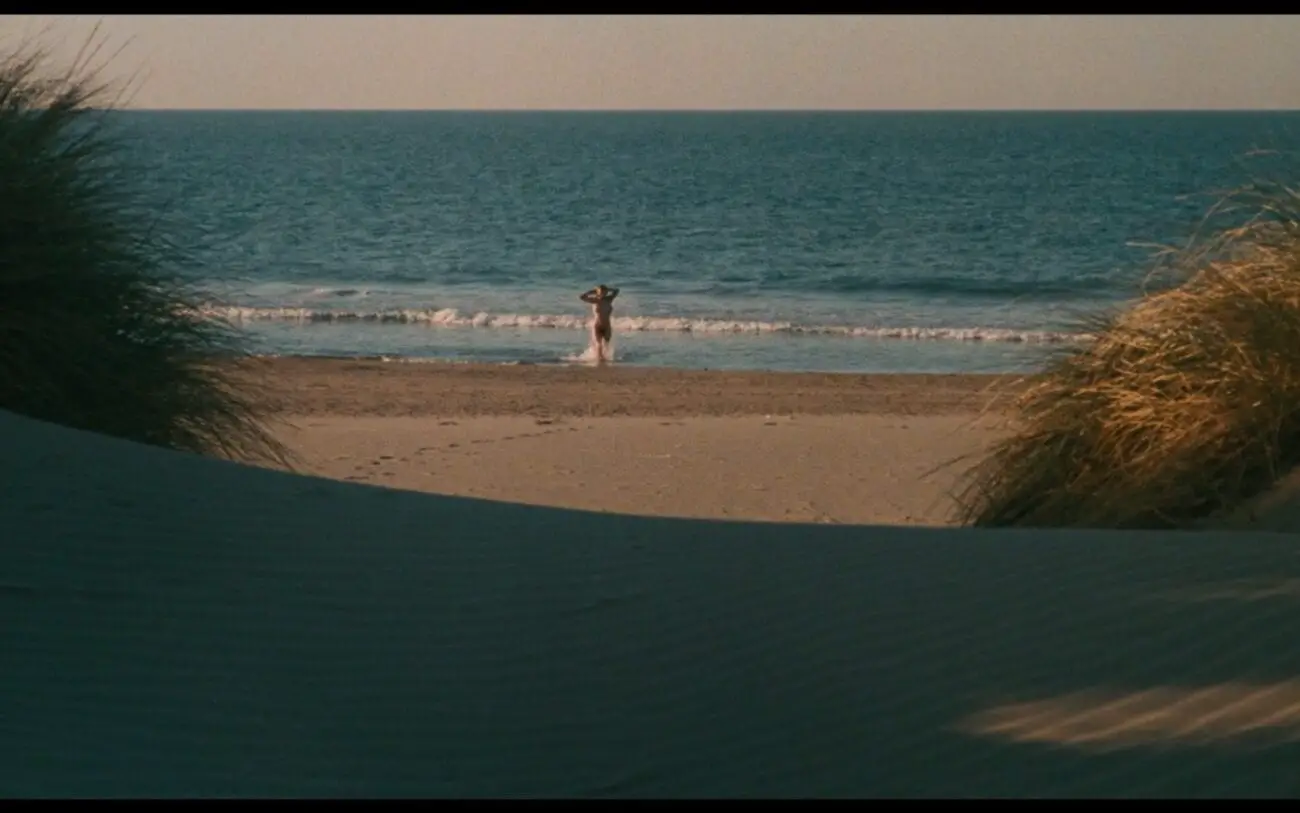Having lived in the Gard department of France, the region where much of Vagabond was filmed, I’m far too familiar with the winter depicted in Agnes Varda’s film. Southern France is famous for its mistral, a cold northern wind that averages thirty miles per hour and lasts days at a time. As a victim of these winds, I would be pushed over on my six a.m. walk to work, forced to open doors with my shoulder only to be blinded by a fresh gust, and taught to lock windows that would otherwise fling open as I cooked or read. I also learned to share my cigarettes with this wind, which smoked more of them than I could.
Yet Mona, the protagonist of Varda’s film, moves undaunted through this French countryside, her hair blowing wildly as she drifts from one place to another. Mona quit her day job as a secretary in order to roam the countryside alone. Free from the confines of a day job, she camps outside, stays with people who offer her shelter, and doesn’t seek long-term work. She speaks of wanting to farm potatoes, but when a goat herder takes her in and offers her a plot of land to do so, she refuses to till it. He tries to convince her to work, tells her of his friends who became vagabonds, warns her that, in the end, loneliness ate them all up. A rift opens between the two until Mona decides to leave. The goat herder, disillusioned with her choices, declares that what she does is “not wandering, it’s withering.” Just a few weeks later, Mona dies from exposure. Idyllic visions of southern France are shattered in this bleak depiction of an isolated woman’s life during its winter months.
But if the cold gets to Mona, she rarely lets on. Her tough exterior keeps her unknowable, even after being an object under investigation for nearly two hours. Instead, viewers learn more about the people she encounters, who are often in emotional turmoil, curious to understand her, or unsatisfied with their lives. Each person gives a talking head about their time with her, though they do so without the presence of an interviewer. They might give their diatribes against Mona to a friend, or look unprompted at the camera to speak, as though divulging their private thoughts. Sometimes their monologue comes before Mona meets them on screen; other times they speak long after they’ve met Mona, as though they can’t shake the impression she left. There don’t seem to be rules about how or when their interview occurs. The effect is a series of tableaux, perhaps even a collection of portraits, of the people she encounters.
Yolande’s Revelation
One character, Yolande, takes a particular interest in Mona. Yolande works as a maid for a nonagenarian woman, Lydie, and finds Mona sleeping in the arms of a man in the back of the house where her uncle works as a caretaker. She knows the couple came in through the broken window, but doesn’t tell anyone about their trespassing. Instead, she looks at the camera and says, “I wish Paulo would dream with me like the lovers in the chateau in each other’s arms.” Unlike many of the other people who encounter Mona, Yolande is not scared of her; rather, she wishes her boyfriend displayed such affection for her. In a talking head nearly half an hour after she first encounters Mona in the film, Yolande looks at the camera and confesses:
Being alone is rough. But being a lonely couple is no better. In Paulo’s arms I feel alone. He likes to go out with me, to go to bed with me, but that’s all he wants. I’m the romantic type. I cannot forget that girl in the arms of the guy with that chain.
Yolande is haunted by what she perceives as a couple’s love for each other, naively romanticizing the life of two strangers with her adamant belief that they must not be lonely—not like her. The direct call to the camera turns Yolande’s monologue into not just something her character confesses during an interview, but lines by an actor who destroys the film’s illusion. Despite having a home and a job and a boyfriend—everything a woman could ask for in a masculine economy—Yolande remains unsatisfied, and her introspection invites viewers to ask ourselves: How do we respond to Mona? Does she unsettle us, or does she reveal a freedom our lives lack? Do we too feel alone in the arms of another person?

Yolande later recognizes Mona on the road and picks her up as a hitchhiker, letting her stay at Lydie’s home for a few days, telling her, “you’ll keep me company. I’m so lonely. I’ll pamper you. I don’t mind. I’m used to it.” For a moment, it seems the two girls could form a friendship, but when Yolande leaves to go grocery shopping, Mona gets drunk with Lydie, while at the store Yolande’s boyfriend asks if the new girl is cute. Yolande returns and demands Mona leave, claiming her boyfriend wants her to go. Her illusion of Mona is destroyed when she becomes threatened by her presence, when Mona’s pursuit of absolute freedom begins to infringe on her own carefully constructed yet fragile life. At this point, it’s hard to sympathize with Mona: she offends those who offer to help her and drifts thoughtlessly to the next person, not having grown or learned from her previous experience. But perhaps we are not meant to like her.
Mona’s Ambition
Varda disavows portraying Mona as a conventional, reassuring stereotype of a woman: she spits, leaves her hair unkempt, blows her nose with her fingers, curses at drivers, and never thanks the people who help her. What could have been a beautiful female star is a figure of unsettling revulsion, and traditional voyeurism associated with female leads is rejected from the beginning, when Mona emerges from the ocean in an extreme long shot. We’re introduced to her from afar, unable to discern the details of her body, her face, unable to assess her beauty. This inability to judge her figure calls attention to our status as voyeurs, and at the same time denies us this status. Then, an abrupt cut to a man holding a postcard of conventionally beautiful women in bathing suits juxtaposes their commodification with the refusal to objectify our protagonist. Of course, this does not mean Mona is free from the male gaze: one man she meets on the road wants to pawn her off as a hooker, and another rapes her off-screen when she camps in a forest. She may live outside the masculine economy, but men still try to force her back in it.

While some of the characters recognize Mona’s ambition (in the words of one woman, “she knew what she wanted. Marry the wrong man, you’re stuck for life. I liked that hippie.”), most of them fear her or feel a need to force her to change. One man finds himself unable to speak in front of her, too disgusted by her appearance and behavior. Mona recognizes this and asks, smiling coyly, if she scares him. He remains mute. She asks to bum a cigarette, and takes three from his pack. She does not represent femininity most effectively to men: she is not prey, not hysterical, and she does not allow others to mold her in their image.
Cixous’ Chaos
The treatment of Mona’s sexuality can be understood with Hélène Cixous’ theory about women’s place in a masculine economy, a theory she posited in her 1976 essay “Castration or Decapitation?” Cixous, a prominent French feminist writer, is famously critical of established gender roles in her writing, including the ways the masculine economy demands domination, competition and the maximization of men’s interests. In this essay, Cixous argues that men insist on changing and controlling women in order to ensure they do not live “unbordered, unorganized, unpoliced by the phallus.” She argues that men attempt to control women out of fear of their potential, and the power they may hold if they were permitted to roam outside the masculine economy. Does Mona not embody this type of woman? Does she not live in an incoherent, chaotic manner, “embedded in the imaginary in her ignorance of the law”? If she repulses almost all who encounter her, including the viewers, is it not because she lives in a manner we do not understand, and have rejected by opting into this economy, which asks us to have a home, to work an often banal job, and to find happiness and freedom within these confines?
By understanding the political implications of her character, Mona’s refusal to be made into a feminine ideal becomes intentional on Varda’s behalf, who establishes her otherness in the opening scene of Vagabond, where Varda narrates as Mona walks out of the ocean:
No one claimed the body, so it went from a ditch to a potter’s field. She had died a natural death without leaving a trace. I wonder if those who knew her as a child still think about her. But those she had met recently still think about her. Those witnesses allowed me to tell the last weeks of her last winter. She left her mark on them. They did not know she had died. I didn’t tell them. Nor that her name was Mona Bergeron. I know little about her myself, but it seems to me she came from the sea.
This introduction establishes Mona as an outsider of society, as someone with no family, no connections to the earth, someone born fully-grown from the water. While Mona may be difficult to understand or sympathize with, this is because she is meant to represent a type of woman who subverts our expectations, who cannot be judged in traditional frameworks because she is not of those frameworks. She follows Cixous’ vision for women by affirming her difference “such that nothing can destroy that difference, rather that it might be affirmed to the point of strangeness.” And since Vagabond does not place judgement on Mona, we’re invited to interrogate why we find her absolutely unsettling.
Feminine Freedom
In the end, though Mona’s death creates a sense of cohesion among all the other characters, it is a cohesion that cannot last. Her death does not redeem them for being scared of or repulsed by her. They failed to see that in resisting the appropriation of women, by being no longer implicated in the preservation of the masculine economy, Mona proposed a desire no longer caught up in fear. Even in those last moments, even confronted with her demise, she remained free. She might be understood as the living other, the rescued other, the other unthreatened by destruction. She is the antithesis of our friend Yolande, a character much easier to sympathize with and see ourselves in. Because we, too, would have rejected and scorned Mona had we met her.
We can’t always feel as open to people as we do to their literary representations, but feeling connected to characters like Mona even briefly reminds us that such openness exists, and creates the aspiration in us to strive to understand the strangeness of others. Would we have learned as much from the real-life version of Mona, been nearly as receptive to the capacity she had to teach? Might we have dismissed her, failed to notice her at all? She started out as an actress on screen, narrowed to become a (unsympathetic) notion of a person, and then grew to represent a way of life foreign yet worthy of our quiet recognition. And now, after this journey, she will always be with us as we approach the beautiful, daunting, precious winters ahead. In recognizing Mona’s ambition, we can understand that her selfish, rude, repulsive actions were in the name of a greater freedom, one which we may not have or even desire, but which nonetheless deserves our respect.




I watched the film last night and found this article today. An excellent (and I feel very accurate) insight into a fantastic film.
Very perceptive. Well done!
Wonderful, detailed review that made me curious about Vagabond.